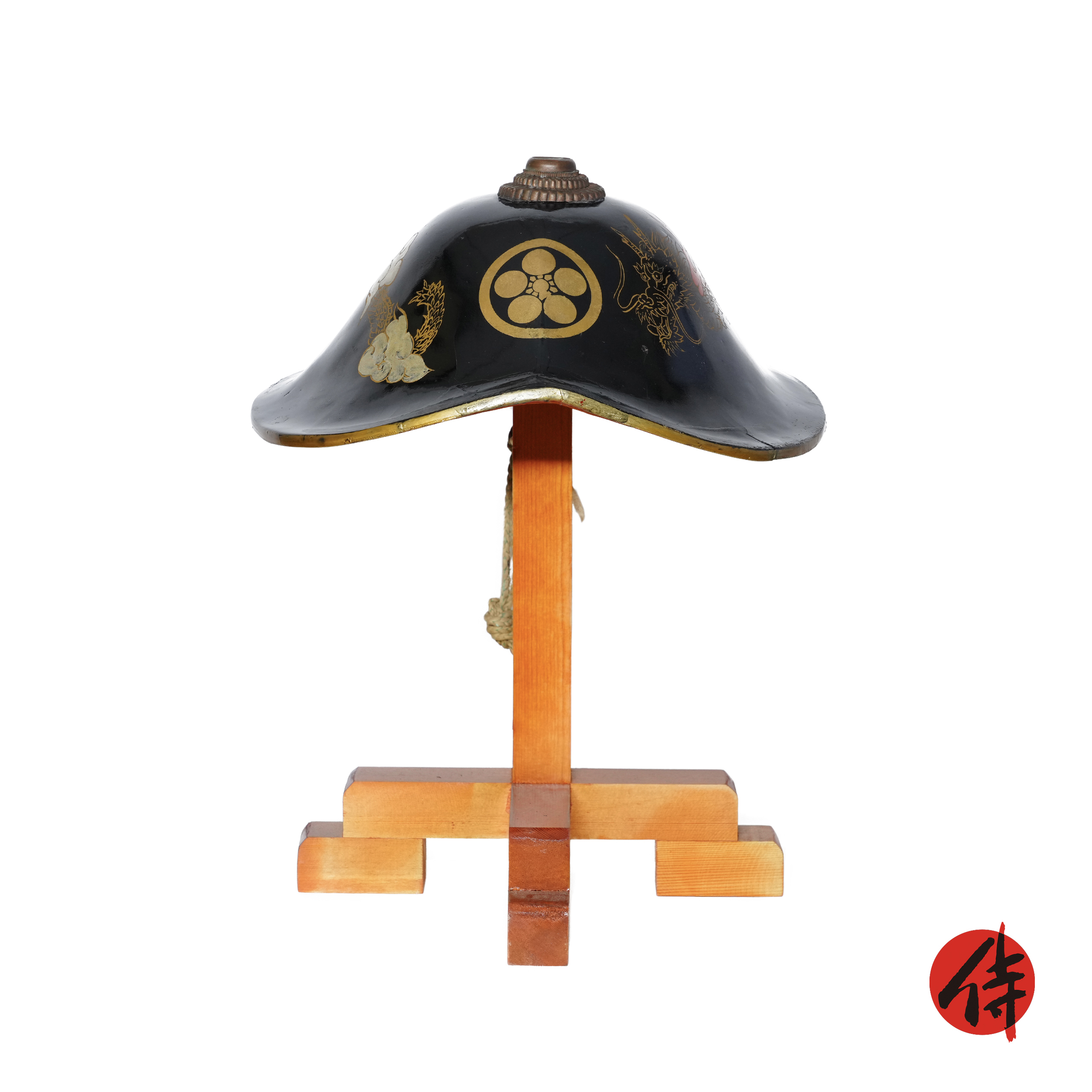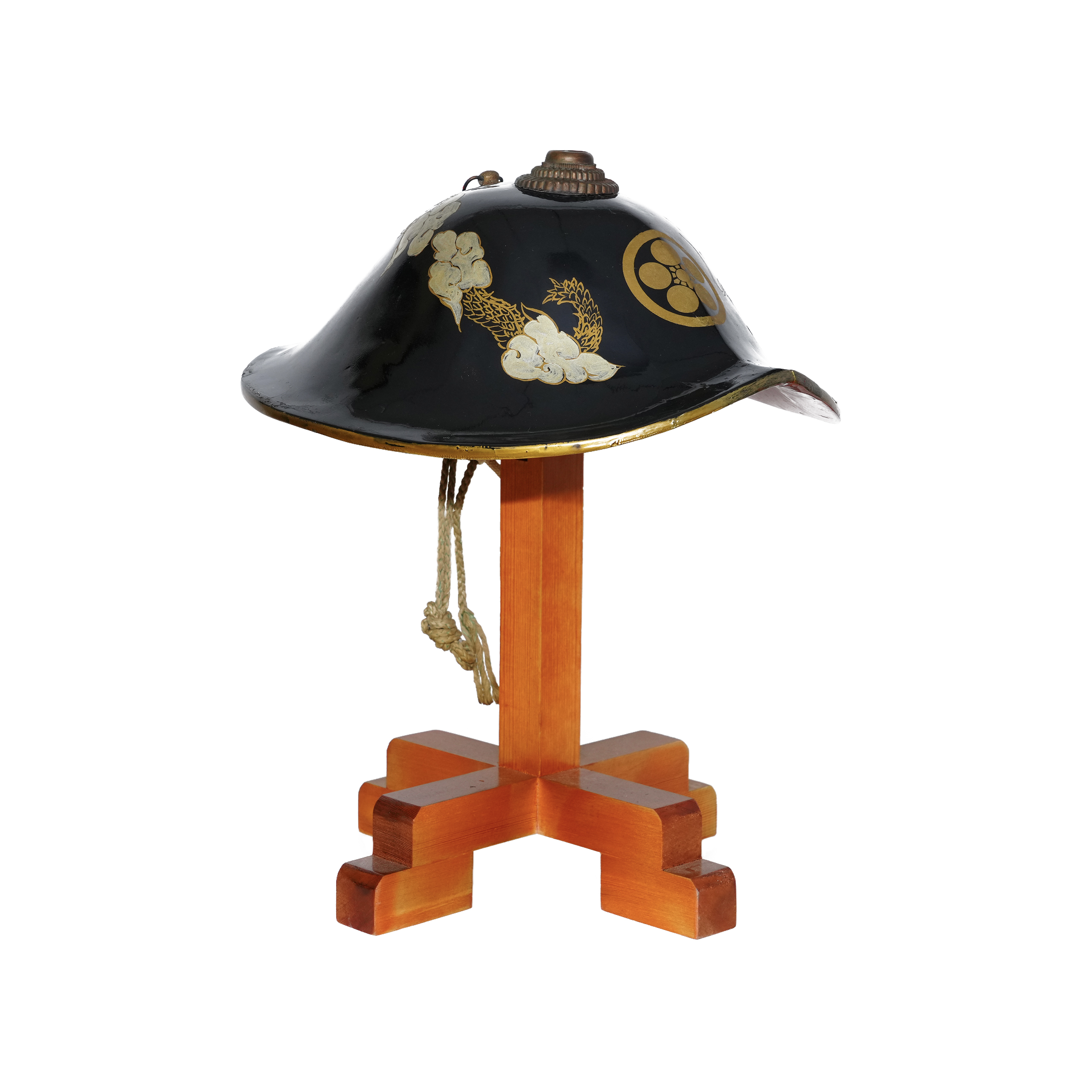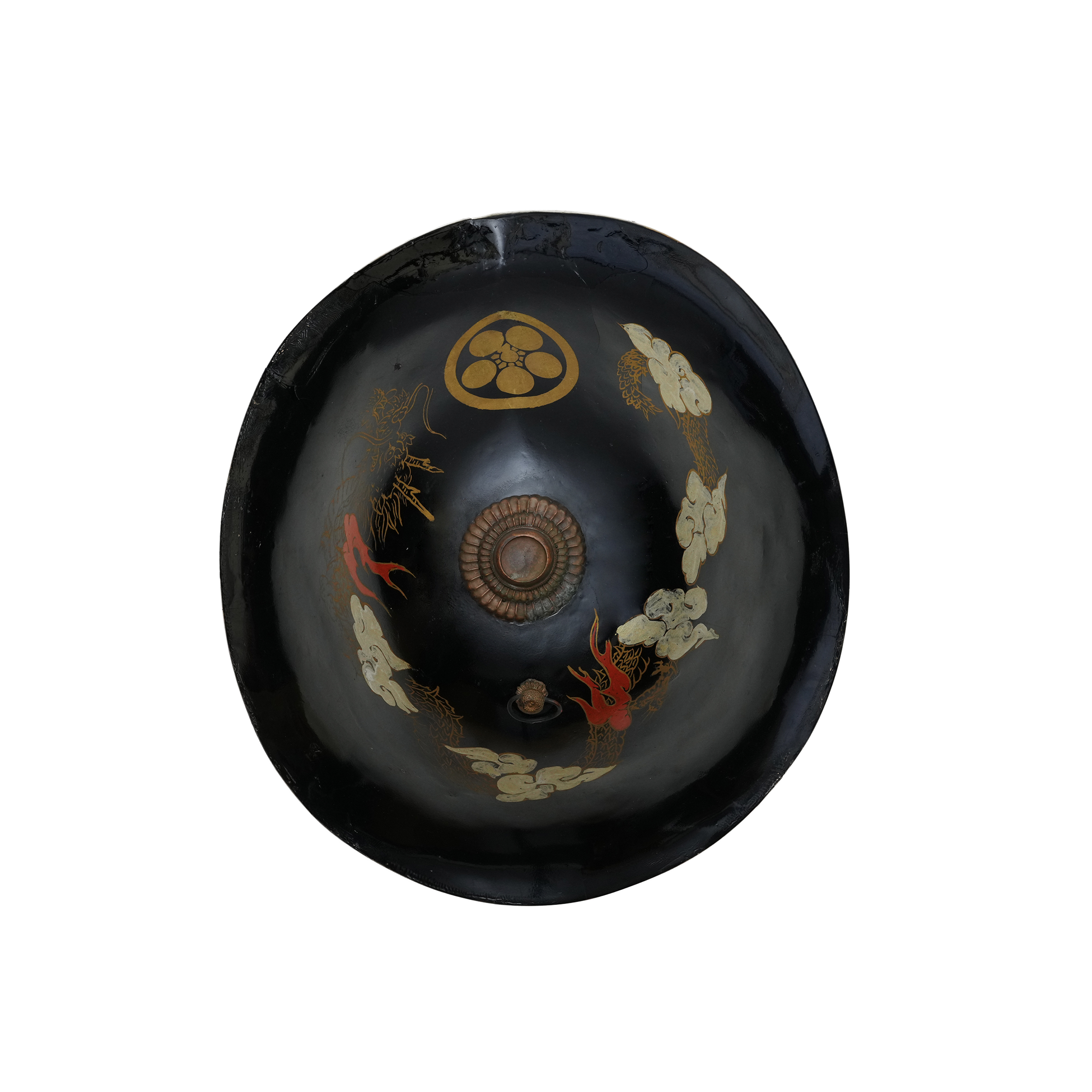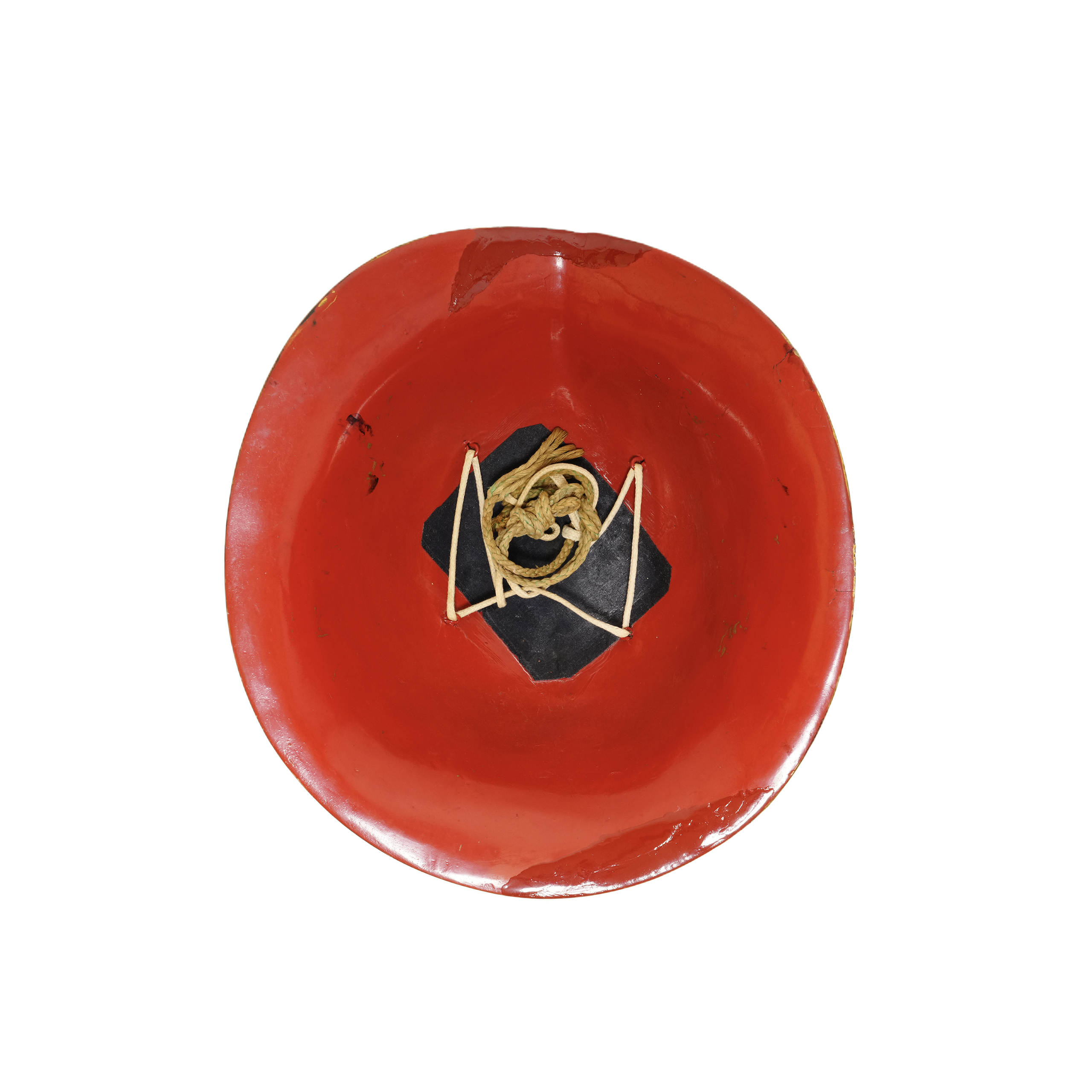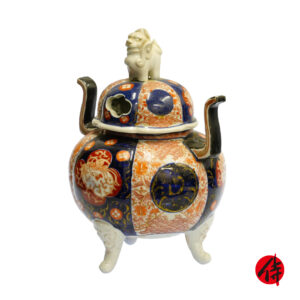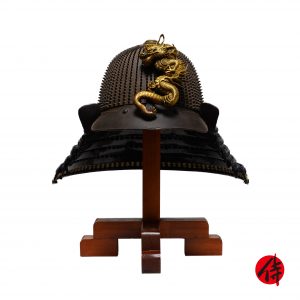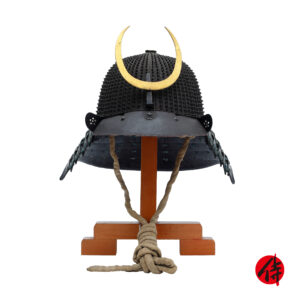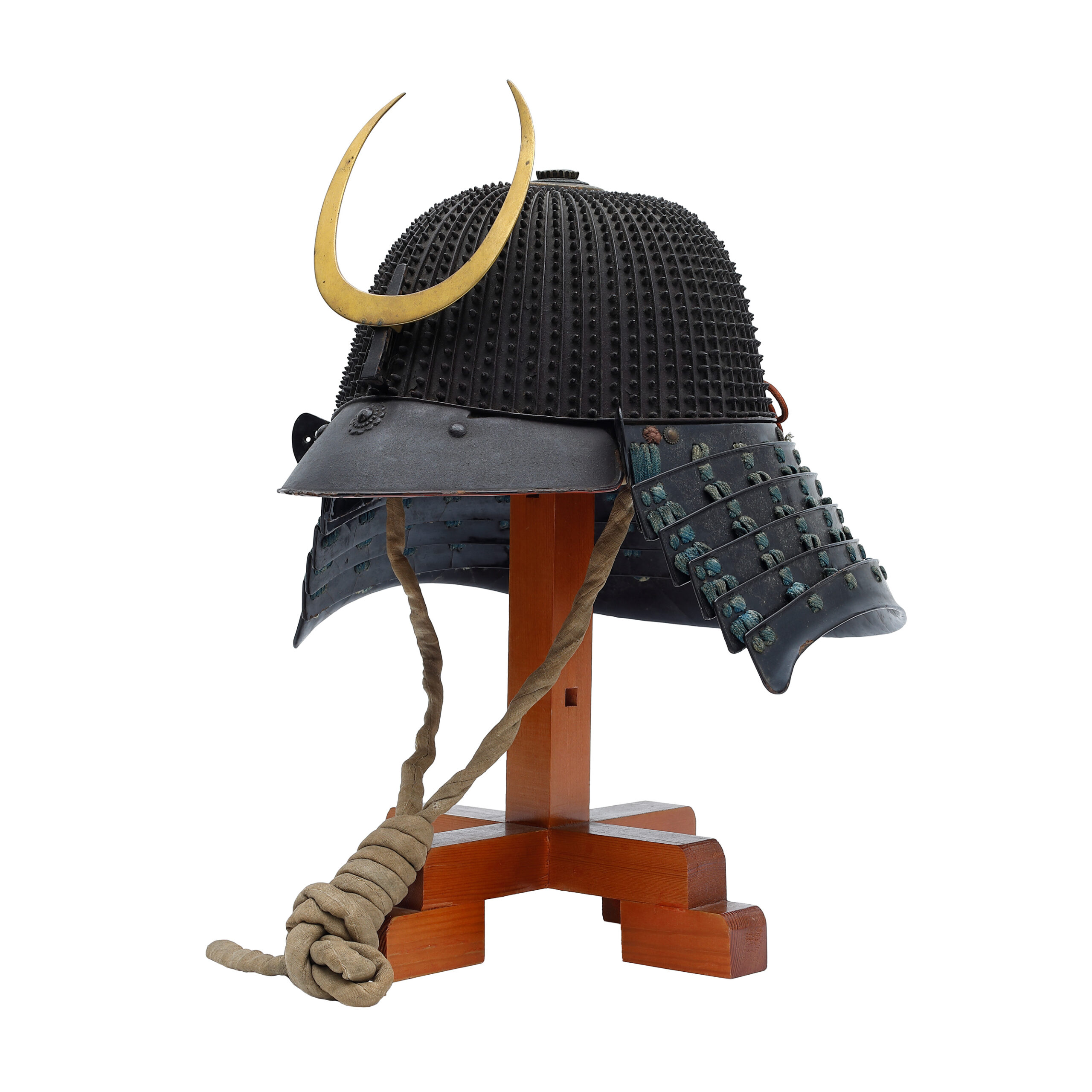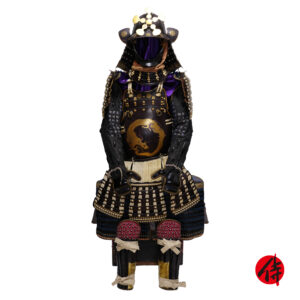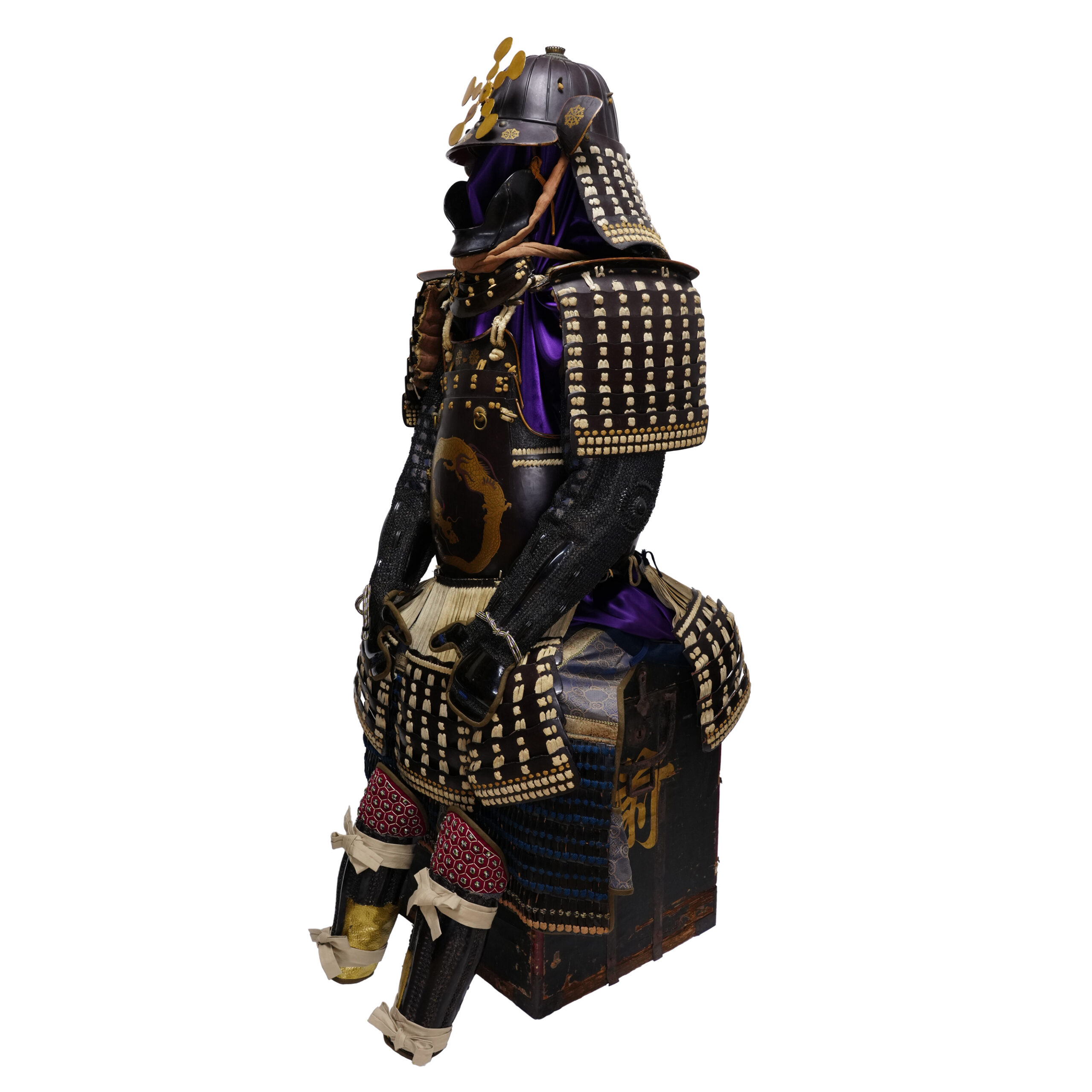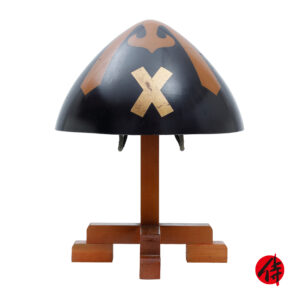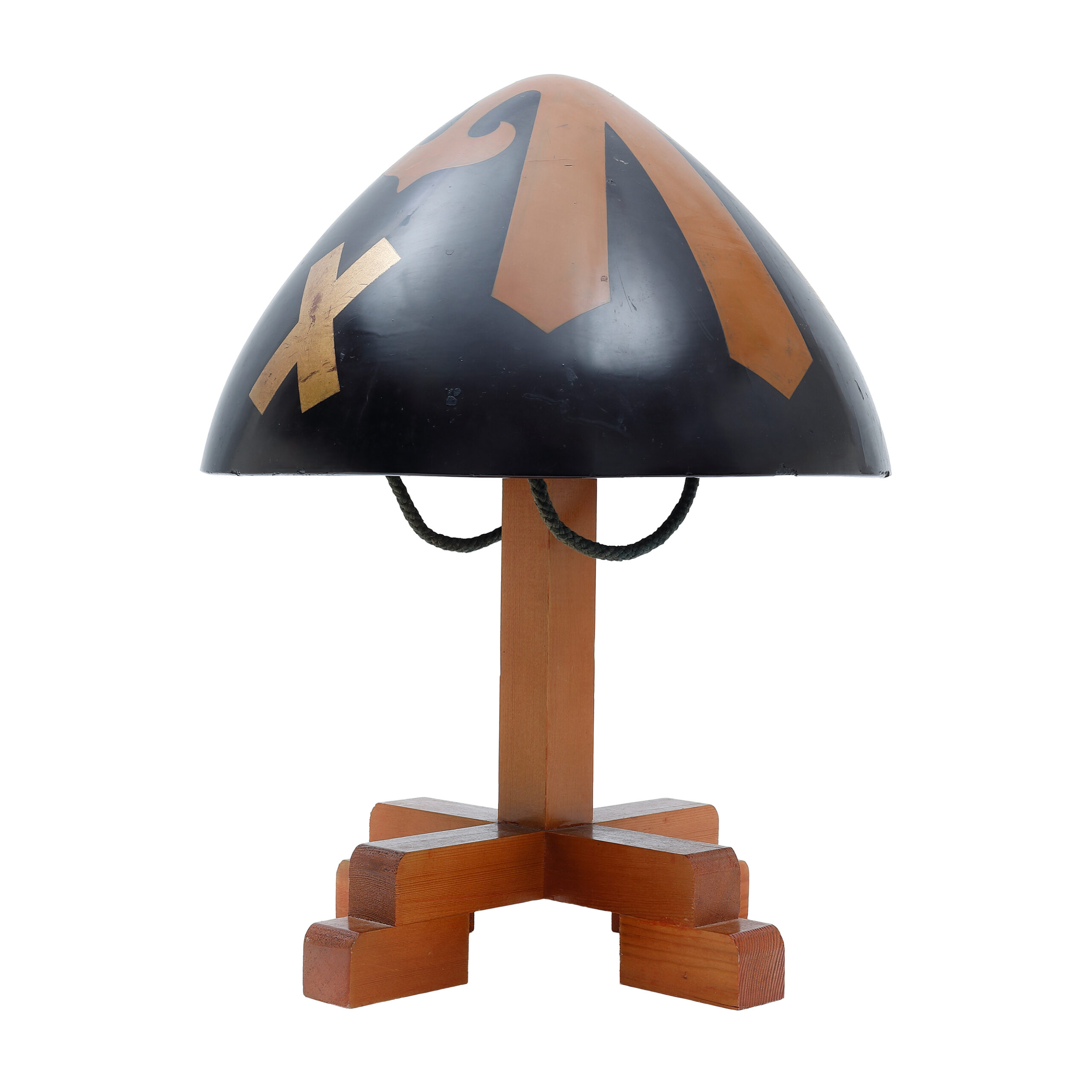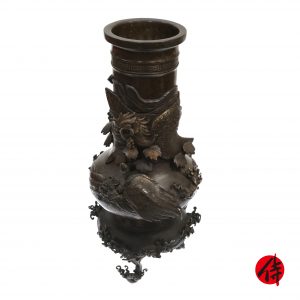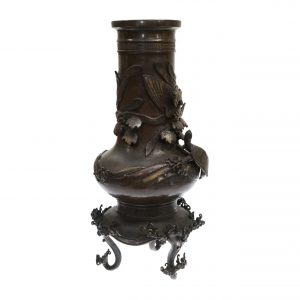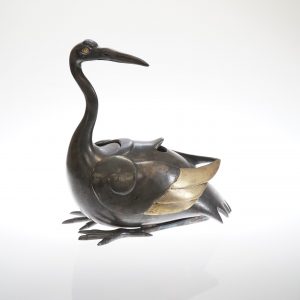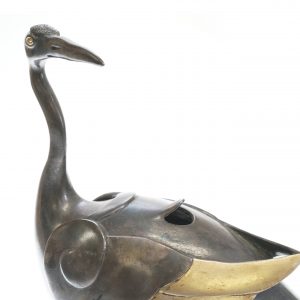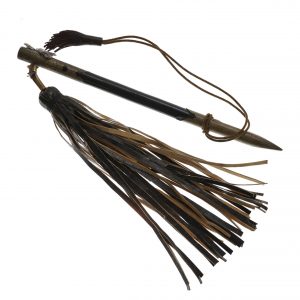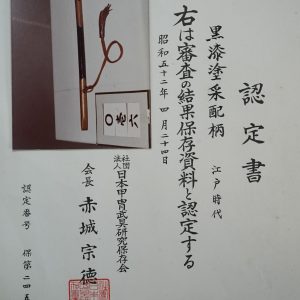Antique Samurai Helmet Jingasa
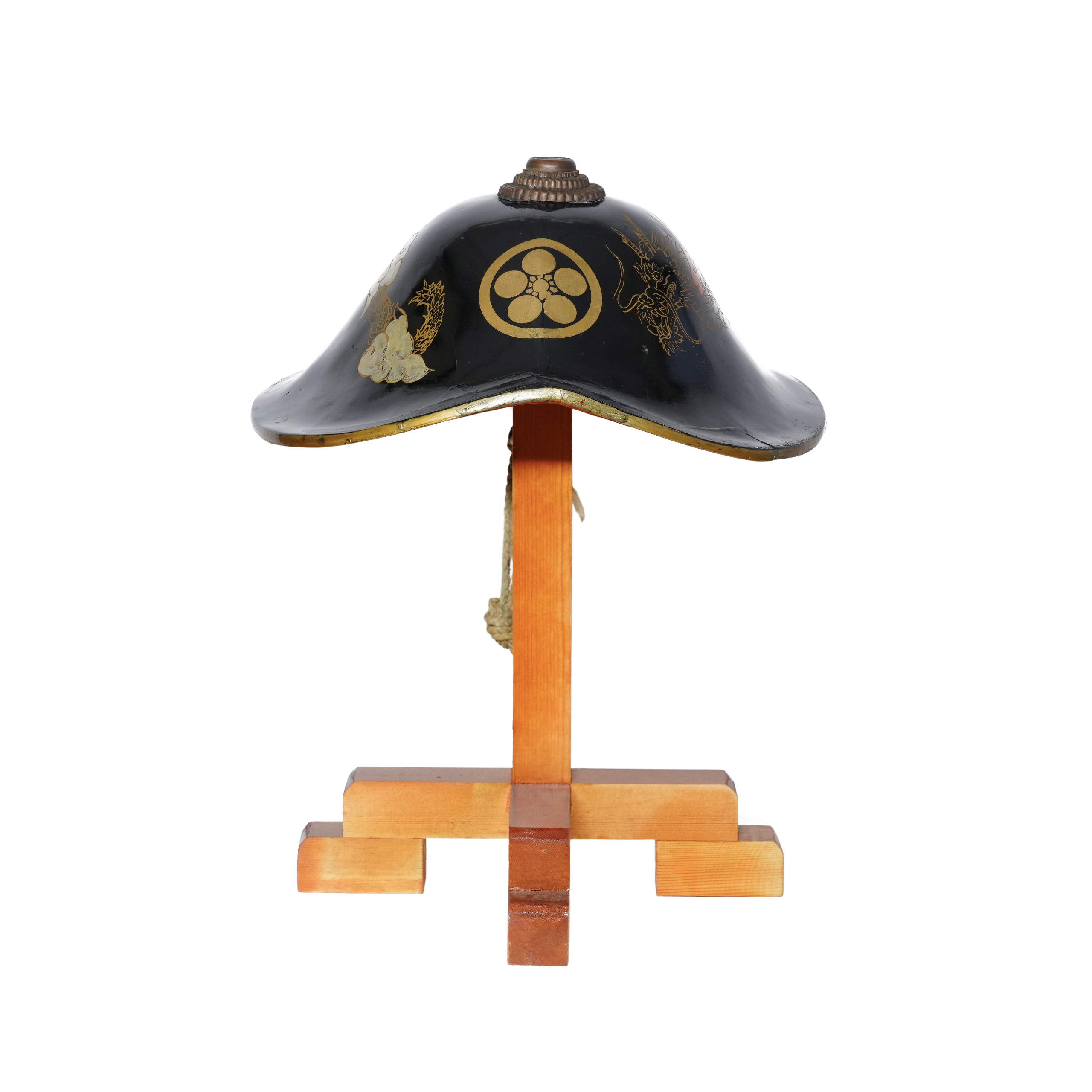
Period: estimated Mid-Late Edo Period
Prime Material: estimated Wood
We classify this item as a type of the Jingasa (陣笠). It is usually made from metal or leather, and Ashigaru (足軽, infantry) and low-ranked soldiers wore it. They substituted it for Kabutos (兜, Samurai helmet). Since the tactics of placing infantry on the front lines became the mainstream, it was a primary matter of how the infantry gained high mobility. Therefore, they wore simple armor with minimal functionality to protect themselves, unlike the luxurious armor of high-ranked Samurai warriors. Crests or marks were drawn on the front of the Jingasa to make it a sign for judging each affiliation.
In the Edo period, people finally welcomed the times of peace. There was a growing trend towards decorative enjoyment, such as designing weapons and armors or how to wear them. Of course, the Jingasas were also included in this tide. Samurai warriors started using Jingasas as a tool to show the wearer’s identity and family, not as a protective gear for the head. Considering its relatively good condition, we think this Jingasa is also one of these Jingasas. Even the inside is lacquered gorgeously, and the front has a beautiful curved shape. Jingasas, which were produced in that period, have artistic and stylish beauty. A theory says that high-ranked Samurai warriors enjoyed wearing these Jingasas when they went out for business, and even some of them changed Jingasas, adopting it to seasons. We hope you enjoyed the history of the Jingasa and would be attracted to the charm of this work.
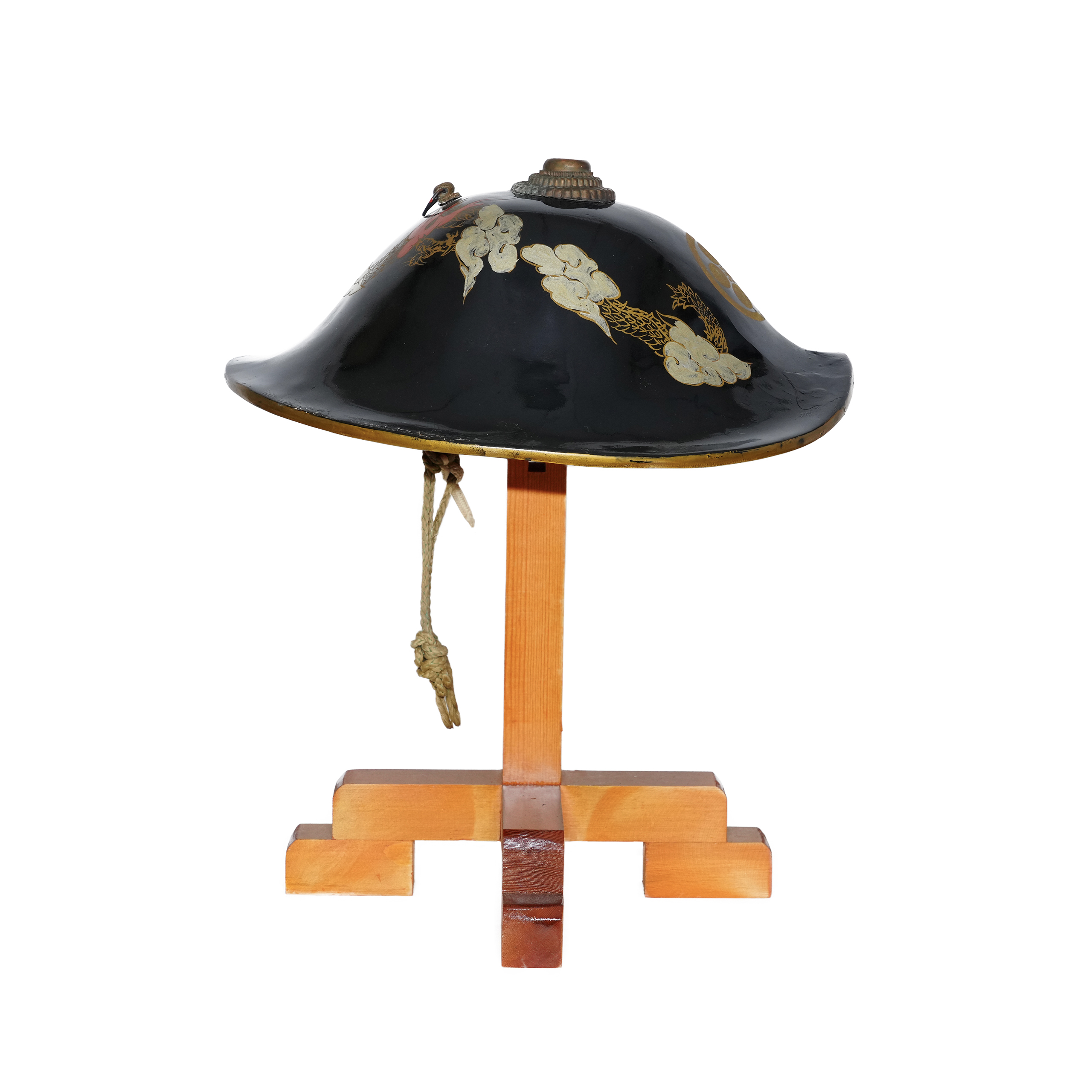
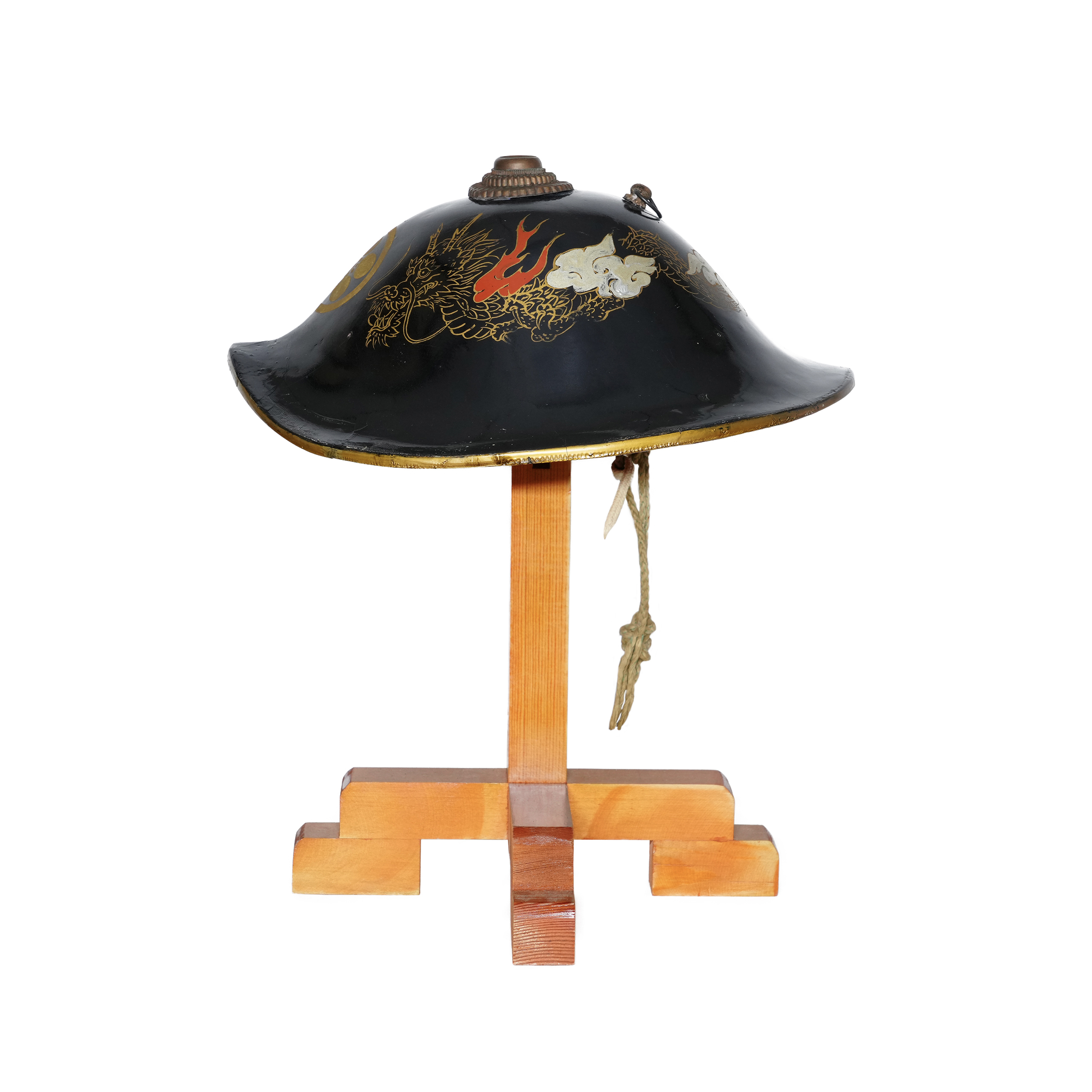
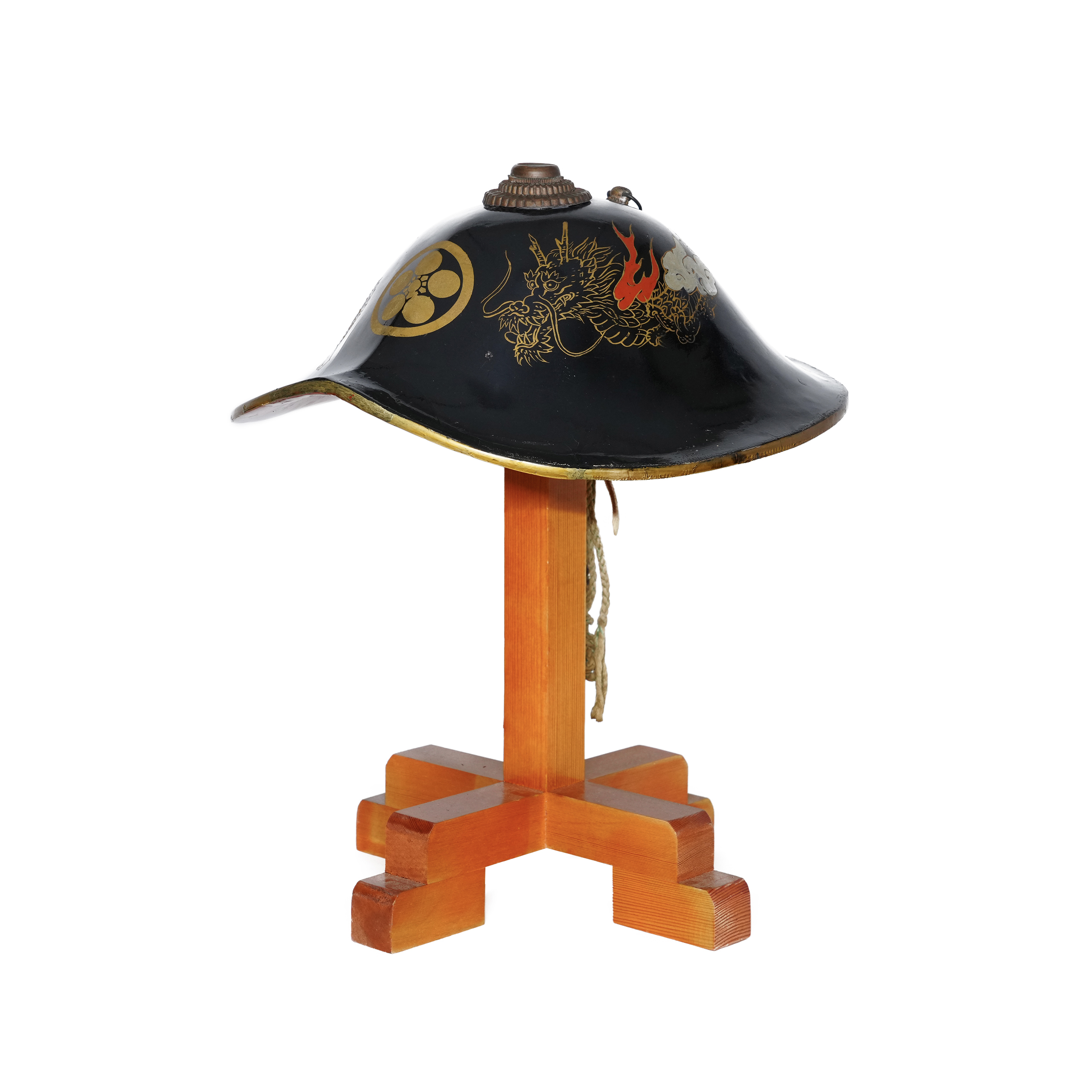
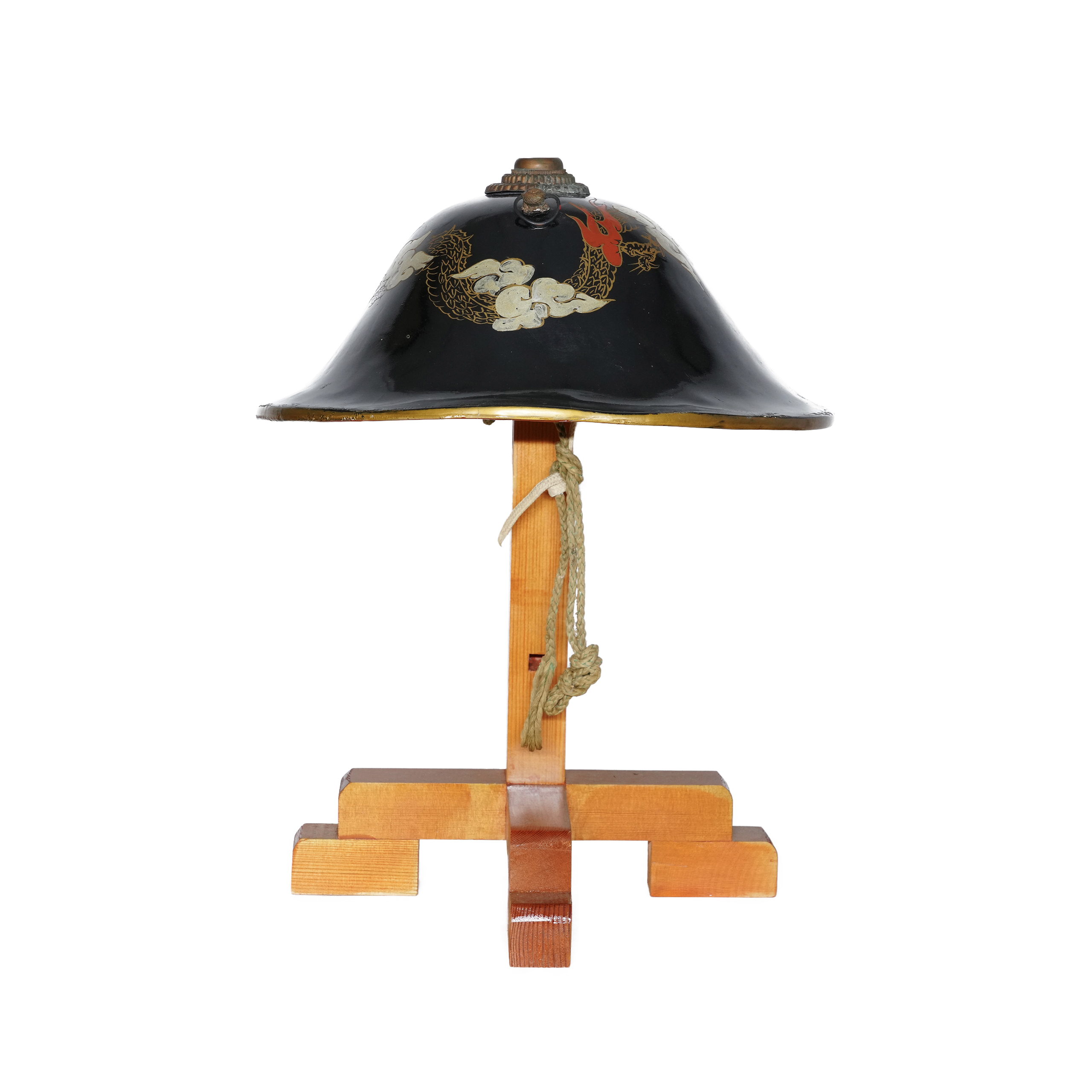
Please focus on the front of this Jingasa. You would find a golden crest is designed. This family crest is called the Maru-ni Umebachi Mon (丸に梅鉢紋), which is derived from the Ume (梅, Japanese apricot blossom) pattern. The Ume pattern profoundly relates to the Tenjin (天神) faith. This belief honors the soul of Sugawara no Michizane (菅原道真, 845-903), and he cherished this flower. Michizane excelled in academics and was appointed and promoted by the emperor back then. However, other aristocrats envied his promotions, and Michizane was demoted to the Kyushu (九州) region, far from the capital. And he passed away two years later. After his death, the capital suffered great natural disasters. And people who opposed Michizane had unfortunate experiences. People thought that his spirit caused these things, and the capital was terrified at that time. One day, when such a situation continued, Michizane possessed a person and demanded to enshrine himself. The imperial court accepted his request and built a shrine in Kyushu to appease his spirit. The Sugawara family, a family of scholars, managed this. And Michizane, who excelled in studies during his lifetime, came to be worshiped as the god of learning. Because of this background, it is said that many family crests with the Ume designs were used in the Kinki and Kita-Kyushu regions.
In addition, you would find the figure of a dragon depicted on this Jingasa, using gold, red, and silvery paints. Initially, dragons were imaginary creatures found in ancient foreign traditions and myths. Furthermore, it is regarded as a symbolic beast of auspicious signs. Its body is likened to nine animals: antlers are deer, the head is a camel, eyes are demons, the neck is a snake, the belly is the Mizuchi (蛟, a mythical animal in Japan that looks like a snake and has a horn and four legs), scales are fish, claws are falcons, palms are tigers, and ears are cows. It was thought that the dragon would reign at the top of all animals because of its odd-looking appearance. This dignified beast has also been incorporated into sword mountings. We assume many Samurai favored dragon designs.

【About us】
Samurai Museum is located in Tokyo, Japan, exhibiting antique artifacts related to the Samurai history. Samurai Museum Shop is the place for those who are interested in Japanese culture and craftsmanship. We deal with antique Samurai swords/armor, traditional crafts made in Japan and so on.
【Antique Japanese helmet (Kabuto) and Export process】
After receiving the full payment from you, we will apply for its export permit from the Board of Education to legally export the helmet to other countries. It normally takes around 2-4 weeks to receive this permit. And we would like you to expect at least 1.0-1.5 months for your order to arrive at your given address after you ordered.
【Payment Method】
We accept payment through Stripe (Credit card), PayPal, Apple Pay or ChromePay, all of which are secure payment methods. Also, you don’t need to make an account on Stripe for the checkout. If you prefer other payment method, please contact us. After confirming your payment, we will apply for an export permit. You may either pay in JPY, USD, AUD, CAD, EUR, CHF or GBP. The price is set in Japanese Yen. Prices in other currencies are automatically calculated based on the latest exchange rate.

【Shipping Duration】
We normally ship via EMS (Express Mail Service) provided by Japan Post. It usually takes at least 5-14 days to deliver the package after you place an order.
We offer Free International Shipping as long as we can ship your order by EMS. If you prefer other shipping carriers, please contact us.
We will inform you of the order’s tracking number via email. Please make sure you fill out your valid email address correctly.
*If you like to make sure if EMS shipping is available to your country, please contact us.

【How to make sure the condition】
Please keep in mind that what you are going to purchase is an antique item. We uploaded high resolution photos for you to check its condition thoroughly. If you like to see more photos with different angles, please feel free to contact us. We will be happy to send them to you so that you can make informed decision. It is essential for us to know that you are happy with your choice of a sword. and we are prepared to use the best of our ability to serve you.
【How To Contact Us】
Please contact us through email, Facebook Messenger or Live Chat if you have any questions. You can find each icon on the right side of the website. Please click one of them to reach us. We will reply to you within 1-2 business days.
【How To Preserve Antique Samurai Armor/Helmets】
Dryness, humidity, and bad ventilation might deteriorate the condition of antique Samurai armor/helmet. The best temperature to preserve Samurai armor/helmet is around 20℃ in Celsius, and humidity should be about 60%. Direct sunlight should be avoided. We recommend storing armors/helmets in a room with good ventilation. If you like to display them outside the boxes for a prolonged time, we suggest using a glass case in order for dust not to be accumulated easily. In case you don’t use a glass case, please make sure to regularly dust off from the armor/helmets by using a soft brush made of delicate cloth or brush for painting.
If you like to know more about the preservation of this helmet, please feel free to contact us.
